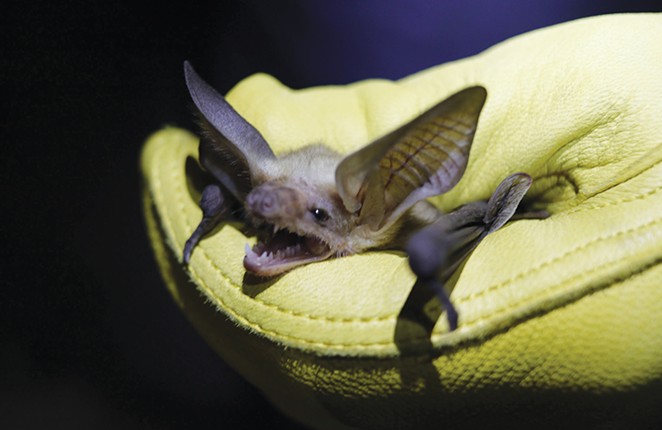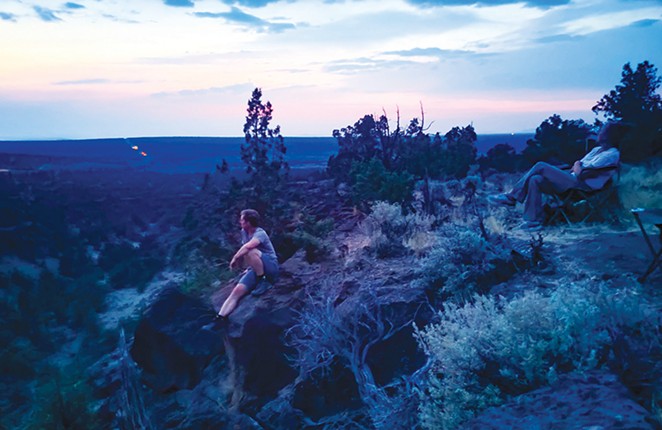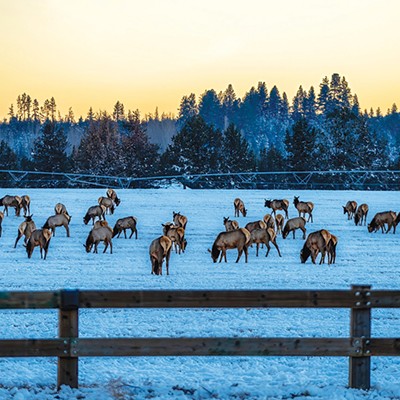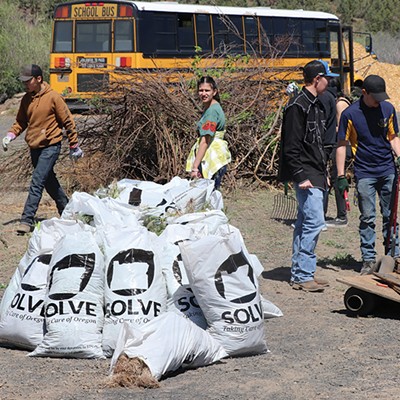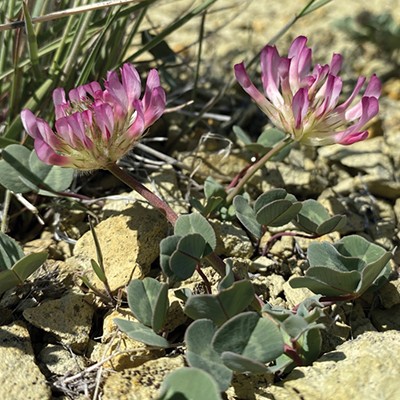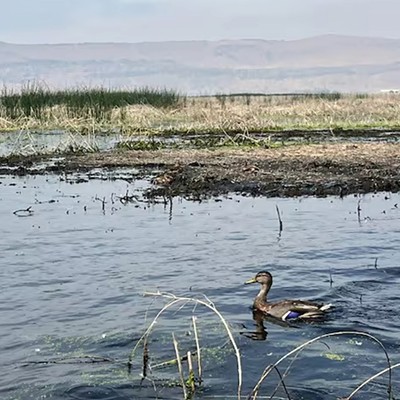On a quiet night in June, about 20 of us volunteers with the OSU-Cascades Audible Bat Project sat on the rim of the Crooked River as it wound its way beneath the towering cliffs of Smith Rock, listening intently for the audible echolocation calls of spotted bats as they hunted for insects. The amazing part was, the bat "calls" could be heard over the din of the cascading river below us.
Spotted and pallid bats are the two species that are the focus of listening surveys for the Audible Bat Project, which volunteers may participate in after undergoing some training either in-person or online.
"Most bats echolocate at a frequency unheard by the human ear, however, some desert species emit echolocation calls within the range of human hearing," said Sara Rose, volunteer coordinator for the Audible Bat Project. "This project helps get a better understanding of how some of our rarest bats are using different habitats in the Pacific Northwest."
Spotted bats and pallid bats echolocate within that range. Think of the sound a clock makes as it ticks away the seconds. The cadence of the single clicks changes as the bats hunt for moths or other nocturnal insects. "When they are hunting, they sound just a little bit different and the clicks sound the same, but the pattern of clicking changes," said Rose. "They will speed up or slow down their clicking depending upon what they are trying to locate."
Pallid bats, which feed on ground-dwelling invertebrates, have echolocation calls which are close to inaudible. "But when females gather at maternity roosts, they lower the frequency on their calls to within the range of human hearing," added Rose. Their unique echolocations sound like rapid double or triple clicks "At these colonies, these bats talk to one another. These social calls are the sounds we are listening for pallid bats."
After that first night at Smith Rock, several of us joined Rose for a group survey at Lake Billy Chinook. We were dropped off at different points along the canyon rim and spent the evening listening to spotted bat calls as they passed by us. After an hour, we returned to our campsite and discussed the night's activity.
Even though the bat listening season is partially over, volunteers are still invited to participate.
"Since we will only have a few events in August and September, I would encourage folks to check out the online training," said Rose. "There are some very low-commitment options for getting involved. But I always welcome people who are interested to sign up for one of our overnight events." Rose will host two group surveys in August, one in central Washington and the other in the Ochocos, then one in September along the John Day River.
"Group surveys have been incredibly successful this year," said Rose. "We set a record in June for the most attendees for an overnight survey event, which was really exciting for me." Independent surveys have been a bit on the decline since last year, and Rose would love to see some more folks taking their bat adventures into their own hands and doing surveys while they're out and about. "That can mean anything from spending an evening sitting next to the Deschutes to keeping your ears open while on a rafting trip down on the Owyhee," said Rose. "Actually, there are a lot of people who live in great spotted and pallid bat habitat who could be doing surveys right from their porches."
Rose related that they've heard pallid bats in two new locations this year. "Of the two species we study, these are the more elusive, at least via listening surveys. So that's a really big deal for me," said Rose. "This study was originally designed with just spotted bats in mind, so it's very encouraging that it is turning out to be useful for finding pallids as well."
To join one of the group surveys or to conduct some independent surveys, visit the OSU-Cascades Audible Bat Project website.

